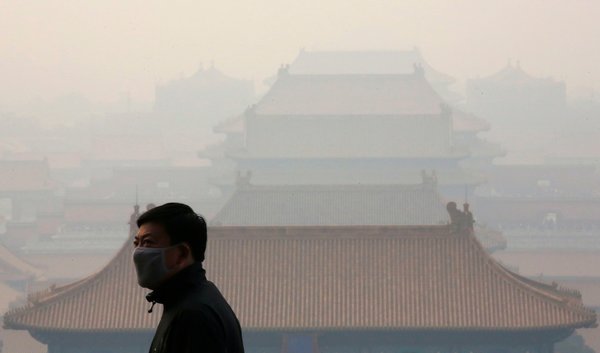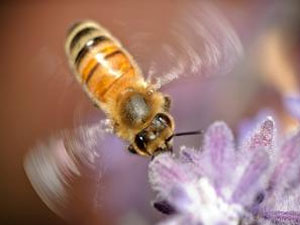《Nature》目录要览:2009-11-19出版
时间:2009-11-20 阅读: 我要评论:
《Nature》目录要览:2009-11-19出版
封面故事:纪念达尔文诞辰200周年专刊(三)
Cover caption
本期Nature是纪念达尔文诞辰200周年三个专刊的第三个。这次的主题是生物多样性及其保护工作。虽然金狮面狨仍是一种濒危动物,但其保护工作在一个很少取得成功的地方却相当成功:通过让金狮面狨重新回归自然以及保护它们在巴西森林中生活环境方面所做努力,这种灵长类动物的种群已经稳定下来(News Feature p. 266)。由Robert Costanza及其同事1997年在Nature杂志上所发表评论文章作为范例介绍的“生态系统服务”法(该方法重视包括生物多样性在内的所有东西),被很多人看作是鼓励保护工作的一个关键:该方法的一个主要支持者Gretchen Daily对其很乐观(News Feature p. 270)。在一篇Opinion文章中,Pavan Sukhdev提出了政府对环境服务的投入问题,其中生物多样性被正确地当作环境服务工作的一个构成部分(277页)。分类学家将线粒体细胞色素C-氧化酶基因的长度为648个碱基对的一段用作一个“DNA条形码”:更有争议的是,Dan Mishmar及其同事提出,该条形码不只是了解物种相关性的一个有用信息,而且是促进多样性发展的一个推动因素(News Feature p. 272)。在哥本哈根会议即将召开之际,Will Turner、Michael Oppenheimer和David Wilcove对自然生态系统和生物多样性何以能够减缓气候变化做了解释(Opinion p. 278)。Robert Smith及其同事强调了地方机构——而不是非政府组织和外来研究人员——在制定生物多样性目标上的重要性(Opinion p. 280)。我们所拥有的有关生物多样及其怎样响应气候变化的最好数据是由古生物学家提供的:Douglas Erwin认为,他们通过采用物理学家所用的一些模拟方法,就有可能用这些数据做更多的事情(Opinion p. 282)。另请参阅本期的编者按和网上内容。
今后十年有望发现太阳系外可住人的行星(The road to rocky planets)
Light and shadow from distant worlds
Drake Deming和Sara Seager对迄今发现的绕太阳以外的恒星运转的370多颗行星的性质做了评述。太阳系外行星的早期发现工作依赖于径向速度或多普勒晃动方法,测量行星的引力对恒星光谱的效应。新的发现工作越来越多地依靠“中天法”,当我们从地球上看行星穿越其恒星时对其进行观测。这种方法使得我们有可能去测量行星的质量和半径,并且在有些情况下还能识别巨型太阳系外行星大气中的气体。在新的天文观测卫星即将问世之际,Deming 和Seager预测,在今后十年的某个时候,我们将会发现一颗“可以居住的”石质行星正在穿越离我们太阳较近的一颗温度较低的红矮星。(Review p. 301)这篇综述文章是我们“国际天文年”系列网上报道之一,网址为:http://go.nature.com/Z35PCw。
代谢疾病遗传研究最新进展(Genetics of metabolic diseases)
Human genetics illuminates the paths to metabolic disease
人类基因组研究方面的进展,正在增进我们对由先天遗传缺陷与环境因素互动所造成的代谢疾病病理生理的认识。Stephen O'Rahilly对在两种最流行的代谢疾病研究方面所取得的最新进展进行了综述,这两种疾病分别是2-型糖尿病和作为其主要风险因素之一的肥胖症。(Review p. 307)
人类DNA甲基化组(Human DNA methylomes)
Human DNA methylomes at base resolution show widespread epigenomic differences
DNA的“第五碱基”,即“甲基化的胞嘧啶”,是一个表观遗传修饰,占哺乳动物基因组的很小一部分,但在调控诸如基因表达和发育等细胞过程中却起重要作用。现在,来自人类胚胎干细胞和胎儿成纤维细胞的一个哺乳动物基因组中“甲基化的胞嘧啶”的首批分辨率为单碱基对的全基因组分布图(或“甲基化组”)已经发布,同时还发布了对转录组、组蛋白修饰、以及几个调控因素的DNA-蛋白互动点的分析结果。这些结果显示,在两种细胞类型之间,甲基化模式存在关键差别,说明多能性和细胞分化可能有不同的基因调控机制。(Article p. 315; News & Views)
Pol II/TFIIB复合物的晶体结构(Gene transcription: new readers start here)
RNA polymerase II–TFIIB structure and mechanism of transcription initiation
RNA聚合酶-II(Pol II)是在基因转录中起中心作用的酶,在真核细胞中制造所有的信使RNA。蛋白编码基因的转录是由Pol II和包括TFIIB在内的一般性转录因子所形成的一个复合物启动的。Kostrewa等人确定了Pol II/TFIIB复合物的完整晶体结构。该结构及互补功能数据表明,转录的启动有一个由6个步骤构成的机制,包括当转录开始点被定位后所触发的向RNA伸长的过渡。(Article p. 323; News & Views)
GRB 090510未能提供“洛伦兹不变性”不守恒的证据(GRB 090510: a test for special relativity)
A limit on the variation of the speed of light arising from quantum gravity effects
用费米伽马射线天文望远镜对遥远的短伽马射线暴GRB 090510所做观测,为验证爱因斯坦狭义相对论的一个中心预测——“洛伦兹不变性”提供了机会。该预测认为,所有观测者在一个真空中所测量到的光速都是完全一样的,跟光子能量无关。对“洛伦兹不变性”不守恒的一个关键验证是,光子速度有可能随能量变化。经过宇宙尺度的光旅行时间的积累,光子速度所发生的即便是非常微小的变化都应当是可以观测到的,比如说一次伽马射线暴的光曲线上的尖峰特征。在GRB 090510的光谱中没有发现“洛伦兹不变性”不守恒的证据,至少在小到“普朗克长度”除以1.2这样一个极限值的程度上没有发现。这个结果与量子-引力理论是相悖的,后者认为:空间-时间的量子性质随光子能量线性改变光速。(Letter p. 331; News & Views)
用新方法生成超平石墨烯(Graphene: new process yields ultraflat form)
Ultraflat graphene
石墨烯因其新颖的基本性能及其在电子学上的潜在应用而受到很多研究。虽然石墨烯实质上是二维结构(只有一个原子厚的一层碳原子),但事实上它总是有较小皱褶的。不管是放在一个基质上还是悬浮着,它总是能产生微小波纹,这被认为是造成人们所观察到的石墨烯的多种不同性能的原因。现在,来自哥伦比亚大学的一个小组开发出一种生成超平石墨烯的简单而有效的方法,该方法是在一个从原子尺度来讲非常平的云母表面上进行沉降,该表面与碳原子紧密结合。所以,波纹的形成并不是高质量石墨烯的一个必要特征。超平样品的获得将有助于研究波纹对石墨烯物理和电子性质的影响。(Letter p. 339)
南极间冰期温度比以前的估计值要高(Interglacials get warmer)
Evidence for warmer interglacials in East Antarctic ice cores
南极冰芯温度变化的重建依赖于这样一个假设:氢和氧同位素比例与温度之间的关系在空间和时间上是稳定的。Sime等人对来自东南极的三个距今34万年的冰芯进行了分析,并利用一个同位素大气环流模型发现,这个关系是非线性的。在温暖时期,同位素比例对温度不是很敏感,所以以前对间冰期温度的估计很有可能偏低约3 ºC。这个结果与南极间冰期峰值温度至少比今天高6 ºC的事实是一致的。这项工作表明,我们对比今天更温暖的气候的认识严重不足。(Letter p. 342; News & Views)
海洋对由人类活动排放的CO2的吸收(Where does our CO2 go?)
Reconstruction of the history of anthropogenic CO2 concentrations in the ocean
海洋是一大碳汇,吸收约三分之一由人类活动造成的CO2排放,但CO2捕获的分布和速度存在相当大的不确定性。Khatiwala等人介绍了对在工业时代海洋中所吸收的由人类活动排放的碳所做的一个基于观测的重建工作。他们绘制了碳浓度最大的地区的分布图,并跟踪了碳随时间的积累。他们的发现表明,海洋对由人类活动排放的碳的吸收自上个世纪50年代以来急剧增长,在最近几十年增长速度有小幅下降。南大洋是最大的碳汇,占吸收总量的40%以上。这些结果还表明,陆地生物圈在上个世纪40年代以前一直是CO2的一个源,但随后变成了一个汇。(Letter p. 346)
异型杂交的两个优势(Two good reasons for sex)
Mutation load and rapid adaptation favour outcrossing over self-fertilization
生物学中最古老的问题之一是,为什么存在不同性别?通过异体受精繁殖的动物要多于通过自体受精繁殖的动物,尽管生出雄性后代及寻找交配对象都是有代价的。人们通常认为,异体受精或异型杂交具有可能超过其代价的两个优势:快速演化的能力和近亲繁殖的避免,但对此很难进行实验验证。现在,使线虫的自体繁殖变种和异体繁殖变种置于选择压力之下的一个实验,为以上观点提供了一个实用的验证,而且该实验还证明,以上两个潜在的标准解释(即两个优势)在促进异型杂交中似乎都扮演一个角色。(Letter p. 350; News & Views)
变构蛋白的活性并非纯粹由结构调控(Allostery goes dynamic)
Dynamic activation of an allosteric regulatory protein
效应子分子被认为通过与一个变构点(与活性点明显不同)结合、从而诱导和稳定蛋白的某一特定构形状态来控制变构蛋白的活性。一项新的研究表明,认为变构蛋白的活性纯粹由结构调控的观点应当予以修正,将来自蛋白动态的一个经常占支配地位的贡献包括进去。Shiou-Ru Tzeng 和 Charalampos Kalodimos对与“降解物激活蛋白”(CAP)相结合的环AMP进行了定性。CAP是被经常用作变构模型的一个转录激活蛋白。他们出乎意料地发现,即便是当处在一个从结构上来讲没有活性的构形时,CAP也能被蛋白动态的变化所激活,以便与配体(DNA)结合。(Letter p. 368)
----------------------
EDITORIALS
----------------------
The entangled bank unravels pp251-252
This third special issue in Nature's year-long celebration of Charles
Darwin focuses on the dire challenges to Earth's biodiversity - and
finds some reason for hope.
doi:10.1038/462251a
http://www.nature.com/nature/journal/v462/n7271/full/462251a.html
Access denied? p252
Information-sharing resources are essential to biologists and deserve
international support.
doi:10.1038/462252a
http://www.nature.com/nature/journal/v462/n7271/full/462252a.html
----------------------
RESEARCH HIGHLIGHTS
----------------------
Biodiversity: Weird worms p254
doi:10.1038/462254a
http://www.nature.com/nature/journal/v462/n7271/full/462254a.html
Geology: Impact ironed out p254
doi:10.1038/462254b
http://www.nature.com/nature/journal/v462/n7271/full/462254b.html
Cancer biology: Gene highs and lows p254
doi:10.1038/462254c
http://www.nature.com/nature/journal/v462/n7271/full/462254c.html
Microscopy: Cell close-up p254
doi:10.1038/462254d
http://www.nature.com/nature/journal/v462/n7271/full/462254d.html
Agriculture: Mixed manure message p254
doi:10.1038/462254e
http://www.nature.com/nature/journal/v462/n7271/full/462254e.html
Palaeontology: Hot-blooded dinosaurs pp254-255
doi:10.1038/462254f
http://www.nature.com/nature/journal/v462/n7271/full/462254f.html
Nanobiotechnology: Magnetic tumour cells p255
doi:10.1038/462255a
http://www.nature.com/nature/journal/v462/n7271/full/462255a.html
Marine ecology: Speedy sponge p255
doi:10.1038/462255b
http://www.nature.com/nature/journal/v462/n7271/full/462255b.html
Planetary science: Cracking Martian ice p255
doi:10.1038/462255c
http://www.nature.com/nature/journal/v462/n7271/full/462255c.html
Regenerative biology: Brainy stem cells p255
doi:10.1038/462255d
http://www.nature.com/nature/journal/v462/n7271/full/462255d.html
----------------------
JOURNAL CLUB
----------------------
Journal club p255
Matt Friedman
doi:10.1038/462255e
http://www.nature.com/nature/journal/v462/n7271/full/462255e.html
----------------------
NEWS
----------------------
News briefing: 19 November 2009 pp256-257
The week in science
doi:10.1038/462256a
http://www.nature.com/news/2009/091118/full/462256a.html
Japanese science faces deep cuts pp258-259
The government's election promises vowed more support for science,
but so far budgets look set to shrink.
David Cyranoski
doi:10.1038/462258a
http://www.nature.com/news/2009/091117/full/462258a.html
Plant genetics database at risk as funds run dry pp258-259
National Science Foundation to cut support for Arabidopsis resource.
Alison Abbott
doi:10.1038/462258b
http://www.nature.com/news/2009/091118/full/462258b.html
Muon collider gains momentum pp260-261
Fermilab pins hopes on untested technology in race to stay at the
cutting edge of physics.
Eric Hand
doi:10.1038/462260a
http://www.nature.com/nature/journal/v462/n7271/full/462260a.html
Efforts to sustain biodiversity fall short pp263-263
But the issue is gaining attention as nations prepare for next year's summit.
Natasha Gilbert
doi:10.1038/462263a
http://www.nature.com/news/2009/091118/full/462263a.html
Growth in R&D investment holding up p264
But analysts expect effects of financial crisis to be more marked next year.
Andrea Chipman
doi:10.1038/462264a
http://www.nature.com/nature/journal/v462/n7271/full/462264a.html
Fresh hope for German stem-cell patent case pp265-265
Referral to European Court may help to harmonize laws on intellectual property.
Alison Abbott
doi:10.1038/462265a
http://www.nature.com/news/2009/091116/full/462265a.html
----------------------
NEWS FEATURES
----------------------
Biodiversity: Biodiversity's bright spot pp266-269
While species losses mount worldwide, conservationists in Brazil have
made great strides towards saving the golden lion tamarin and its
forest habitat from destruction. Gene Russo reports.
Gene Russo
doi:10.1038/462266a
http://www.nature.com/nature/journal/v462/n7271/full/462266a.html
Biodiversity: Putting a price on nature pp270-271
Gretchen Daily knows the value of ecosystems ― but can ascribing
financial worth to them help to maintain biodiversity? Emma Marris
meets an ecosystem-services evangelist.
Emma Marris
doi:10.1038/462270a
http://www.nature.com/news/2009/091118/full/462270a.html
Biodiversity: On the origin of bar codes pp272-274
Genetic sequences in a cell's mitochondria can be used to accurately
determine species. Could this be because they are responsible for
creating what they identify? Nick Lane investigates.
Nick Lane
doi:10.1038/462272a
http://www.nature.com/news/2009/091118/full/462272a.html
----------------------
COLUMN
----------------------
Experts and democracy pp275-275
Specialist advice can be invaluable in shaping policy, but, argues
Colin Macilwain, democracies need to keep a careful eye on the powers
acquired by an unelected elite.
Colin Macilwain
doi:10.1038/462275a
http://www.nature.com/news/2009/091118/full/462275a.html
----------------------
CORRESPONDENCE
----------------------
OPINION
Boreal forests' carbon stores need better management p276
Stuart Pimm, Nigel Roulet and Andrew Weaver
doi:10.1038/462276a
http://www.nature.com/nature/journal/v462/n7271/full/462276a.html
Legal and practical pitfalls in making use of patents p276
David Piehler
doi:10.1038/462276b
http://www.nature.com/nature/journal/v462/n7271/full/462276b.html
Water should take centre stage at climate talks p276
Yulia Timoshkina
doi:10.1038/462276c
http://www.nature.com/nature/journal/v462/n7271/full/462276c.html
Sensible measures to guard India's groundwater supply p276
Saumitra Mukherjee
doi:10.1038/462276d
http://www.nature.com/nature/journal/v462/n7271/full/462276d.html
----------------------
OPINION
----------------------
Costing the Earth p277
The value of biodiversity must be accounted for, says Pavan Sukhdev.
It is time for governments to invest to secure the flow of nature's
'public goods'.
Pavan Sukhdev
doi:10.1038/462277a
http://www.nature.com/nature/journal/v462/n7271/full/462277a.html
A force to fight global warming pp278-279
Natural ecosystems and biodiversity must be made a bulwark against
climate change, not a casualty of it, argue Will R. Turner, Michael
Oppenheimer and David S. Wilcove.
Will R. Turner, Michael Oppenheimer and David S. Wilcove
doi:10.1038/462278a
http://www.nature.com/nature/journal/v462/n7271/full/462278a.html
Let the locals lead pp280-281
To save biodiversity, on-the-ground agencies need to set the conservation
research agenda, not distant academics and non-governmental organizations,
argue Robert J. Smith and colleagues.
Robert J. Smith et al.
doi:10.1038/462280a
http://www.nature.com/nature/journal/v462/n7271/full/462280a.html
A call to the custodians of deep time pp282-283
Palaeontologists must model the causes of biodiversity rather than
simply cataloguing fossils, says Douglas Erwin, as they curate the only
record of ecosystems undamaged by humans.
Douglas Erwin
doi:10.1038/462282a
http://www.nature.com/nature/journal/v462/n7271/full/462282a.html
Global Darwin: Multicultural mergers pp284-285
Latin Americans first saw evolution as a reason to 'whiten' their
societies, then as a reason to take pride in their mixed lineage, says
Jurgen Buchenau in the last of four pieces on Darwin's global influence.
Jurgen Buchenau
doi:10.1038/462284a
http://www.nature.com/nature/journal/v462/n7271/full/462284a.html
----------------------
BOOKS AND ARTS
----------------------
OPINION
Bonds forged on the high seas pp286-287
Shared experiences on global voyages linked Darwin and his fellow
naturalists, explains Alistair Sponsel.
Alistair Sponsel reviews Darwin's Armada: Four Voyages and the Battle
for the Theory of Evolution by Iain McCalman
doi:10.1038/462286a
http://www.nature.com/nature/journal/v462/n7271/full/462286a.html
Log of life beneath the waves p287
Mark Schrope reviews World Ocean Census: A Global Survey of Marine Life
by Darlene Trew Crist, Gail Scowcroft and James M. Harding Jr
doi:10.1038/462287a
http://www.nature.com/nature/journal/v462/n7271/full/462287a.html
Q&A: Bird behaviour, Darwin and dance p288
Nicky Clayton, a biologist and psychologist who studies the behaviour of
birds, and who is also a salsa and tango dancer, collaborated with Rambert
Dance Company to create a work commemorating Charles Darwin. As The Comedy
of Change tours the United Kingdom, she explains how communicating via
motion is common to both dance and the natural world.
Patrick Goymer
doi:10.1038/462288a
http://www.nature.com/nature/journal/v462/n7271/full/462288a.html
In Retrospect: The earliest picture of evolution? p289
Ideas about the mutability of species may have been part of Enlightenment
imagery before Lamarck.
Fausto Barbagli reviews De anima brutorum commentaria (Commentary on the
Soul of Animals) by Francesco Maria Soldini
doi:10.1038/462289a
http://www.nature.com/nature/journal/v462/n7271/full/462289a.html
Corrections p289
doi:10.1038/462289b
http://www.nature.com/nature/journal/v462/n7271/full/462289b.html
----------------------
NEWS AND VIEWS
----------------------
Astrophysics: Burst of support for relativity pp291-292
Light from a distant [gamma]-ray burst backs up a key prediction of Albert
Einstein's theory of relativity - that photon speed is the same regardless
of energy. But it might set the stage for evolution of the theory.
Giovanni Amelino-Camelia
doi:10.1038/462291a
http://www.nature.com/nature/journal/v462/n7271/full/462291a.html
Structural biology: New beginnings for transcription pp292-293
A structure for the enzyme RNA polymerase II in combination with the
transcription factor TFIIB changes our view of how the polymerase and
its helper proteins initiate transcription.
Steven Hahn
doi:10.1038/462292a
http://www.nature.com/nature/journal/v462/n7271/full/462292a.html
Evolutionary biology: Why reproduction often takes two pp294-295
On the face of it, self-fertilization is the efficient way to breed:
compared with outcrossing, there's usually much less fuss, for a start.
So why isn't reproduction by selfing far more prevalent than it is?
Aneil F. Agrawal
doi:10.1038/462294a
http://www.nature.com/nature/journal/v462/n7271/full/462294a.html
50 & 100 years ago p295
doi:10.1038/462295b
http://www.nature.com/nature/journal/v462/n7271/full/462295b.html
Palaeoclimate: Kink in the thermometer pp295-296
Temperature estimates derived from isotopes in polar ice cores reveal
much about Earth's past climate. According to the latest analysis,
interglacial periods were rather warmer than previously thought.
David Noone
doi:10.1038/462295a
http://www.nature.com/nature/journal/v462/n7271/full/462295a.html
Epigenomics: Methylation matters pp296-297
Genome-wide maps of methylated cytosine bases at single-base-pair resolution
in human cells reveal distinct differences between cell types. These
maps provide a starting point to decode the function of this enigmatic mark.
Dirk Schubeler
doi:10.1038/462296a
http://www.nature.com/nature/journal/v462/n7271/full/462296a.html
Chemical physics: Guiding light p297
Andrew Mitchinson
doi:10.1038/462297a
http://www.nature.com/nature/journal/v462/n7271/full/462297a.html
----------------------
NEWS AND VIEWS Q&A
----------------------
Malaria: Evolution in vector control pp298-300
Each week some 20,000 people die from malaria. There will be no magic
ways of reducing this dreadful toll, not least because the mosquito vector
and the parasite itself have formidable abilities to resist control
measures. Angles of attack that rest on evolutionary principles are being explored.
Yannis Michalakis and Francois Renaud
doi:10.1038/462298a
http://www.nature.com/nature/journal/v462/n7271/full/462298a.html
----------------------
REVIEWS
----------------------
Light and shadow from distant worlds pp301-306
Drake Deming and Sara Seager
doi:10.1038/nature08556
Abstract: http://www.nature.com/nature/journal/v462/n7271/abs/nature08556.html
Article: http://www.nature.com/nature/journal/v462/n7271/full/nature08556.html
Human genetics illuminates the paths to metabolic disease pp307-314
Stephen O/'Rahilly
doi:10.1038/nature08532
Abstract: http://www.nature.com/nature/journal/v462/n7271/abs/nature08532.html
Article: http://www.nature.com/nature/journal/v462/n7271/full/nature08532.html
----------------------
ARTICLES
----------------------
Human DNA methylomes at base resolution show widespread epigenomic differences
pp315-322
DNA cytosine methylation has essential roles in a number of cellular processes.
Here, the first genome-wide, single-base-resolution maps of methylated cytosines
in a mammalian genome - from both human embryonic stem cells and fetal fibroblasts -
are presented, along with analyses of the transcriptome, histone modifications,
and sites of DNA-protein interaction for several regulatory factors. The results
reveal key differences in methylation patterns between the two genomes.
Ryan Lister et al.
doi:10.1038/nature08514
Abstract: http://www.nature.com/nature/journal/v462/n7271/abs/nature08514.html
Article: http://www.nature.com/nature/journal/v462/n7271/full/nature08514.html
RNA polymerase II-TFIIB structure and mechanism of transcription initiation
pp323-330
Transcription of eukaryotic protein-coding genes is initiated by RNA polymerase II
(Pol II) in a complex with transcription factors including the transcription factor
IIB (B). The crystal structure of the complete Pol II-B complex is now presented
with complementary functional data. The results shed light on the mechanism of
transcription initiation, including the transition to RNA elongation.
Dirk Kostrewa et al.
doi:10.1038/nature08548
Abstract: http://www.nature.com/nature/journal/v462/n7271/abs/nature08548.html
Article: http://www.nature.com/nature/journal/v462/n7271/full/nature08548.html
----------------------
LETTERS
----------------------
A limit on the variation of the speed of light arising from quantum gravity
effects pp331-334
Lorentz invariance - the postulate that all observers measure exactly the same
speed of light in vacuum, independent of photon energy - is a cornerstone of
Einstein's special relativity, but it has been suggested that it might break
near the Planck scale. A possible variation of photon speed with energy is a
key test for this proposed violation; here, by studying sharp features in
γ-ray burst light-curves to look for even tiny variations in photon
speed, no evidence for the violation of Lorentz invariance is found.
A. A. Abdo et al.
doi:10.1038/nature08574
Abstract: http://www.nature.com/nature/journal/v462/n7271/abs/nature08574.html
Article: http://www.nature.com/nature/journal/v462/n7271/full/nature08574.html
Coexistence of Fermi arcs and Fermi pockets in a high-Tc copper oxide
superconductor pp335-338
Fermi arcs, which are open-ended gapless sections in the large Fermi surface,
have been observed in the pseudogap state of high-transition-temperature (high-Tc)
copper oxide superconductors rather than the closed loop expected of an ordinary
metal. This is all the more puzzling because Fermi pockets have been suggested by
recent quantum oscillation measurements. Fermi pockets are now measured in a
high-Tc copper oxide superconductor and, surprisingly, they appear to coexist
with the Fermi arcs.
Jianqiao Meng et al.
doi:10.1038/nature08521
Abstract: http://www.nature.com/nature/journal/v462/n7271/abs/nature08521.html
Article: http://www.nature.com/nature/journal/v462/n7271/full/nature08521.html
Ultraflat graphene pp339-341
Graphene, an atom-thin carbon sheet is interesting for its fundamental properties
as well as for its possible applications in electronics, is not strictly
two-dimensional. Microscopic corrugations, or ripples, have been observed in
all graphene sheets so far. Direct experimental study of the physics of such
ripples has been hindered by the lack of flat graphene layers. Ultraflat graphene
is now achieved through its deposition on the atomically flat terraces of
cleaved mica surfaces.
Chun Hung Lui et al.
doi:10.1038/nature08569
Abstract: http://www.nature.com/nature/journal/v462/n7271/abs/nature08569.html
Article: http://www.nature.com/nature/journal/v462/n7271/full/nature08569.html
Evidence for warmer interglacials in East Antarctic ice cores pp342-345
Reconstructions of temperature variations from Antarctic ice cores rely on the
assumption that the relationship between hydrogen and oxygen isotope ratios and
temperature are stable in space and time. Three East Antarctic ice core records
are now analysed alongside input from general circulation models to reveal that
during warmer interglacial periods the isotope ratios are less sensitive to
temperature than during colder interglacials; consequently, previous estimates
of interglacial temperatures are probably too cold.
L. C. Sime, E. W. Wolff, K. I. C. Oliver and J. C. Tindall
doi:10.1038/nature08564
Abstract: http://www.nature.com/nature/journal/v462/n7271/abs/nature08564.html
Article: http://www.nature.com/nature/journal/v462/n7271/full/nature08564.html
Reconstruction of the history of anthropogenic CO2 concentrations in the ocean
pp346-349
The ocean takes up 20 to 35 per cent of anthropogenic CO2 emissions, but
uncertainties remain as to the distribution of this CO2 in the ocean, its rate
of uptake over the industrial era, and the relative roles of the ocean and
terrestrial biosphere in anthropogenic CO2 sequestration. An observationally
based reconstruction of the spatially resolved, time-dependent history of
anthropogenic carbon in the ocean over the industrial era now allows these
questions to be addressed.
S. Khatiwala, F. Primeau and T. Hall
doi:10.1038/nature08526
Abstract: http://www.nature.com/nature/journal/v462/n7271/abs/nature08526.html
Article: http://www.nature.com/nature/journal/v462/n7271/full/nature08526.html
Mutation load and rapid adaptation favour outcrossing over self-fertilization
pp350-352
The tendency of organisms to reproduce by cross-fertilization, despite the
advantages of self-fertilization and particularly the cost of males, is one of
the oldest puzzles of evolutionary biology. Two advantages of outcrossing that
could outweigh this cost have been suggested: the avoidance of inbreeding and
an enhanced ability to adapt to environmental change. Here, the study of
outcrossing in populations of Caenorhabditis elegans suggests that both of
these explanations are correct.
Levi T. Morran, Michelle D. Parmenter and Patrick C. Phillips
doi:10.1038/nature08496
Abstract: http://www.nature.com/nature/journal/v462/n7271/abs/nature08496.html
Article: http://www.nature.com/nature/journal/v462/n7271/full/nature08496.html
Frequency of gamma oscillations routes flow of information in the hippocampus
pp353-357
Gamma oscillations in the brain are thought to 'bind' spatially distributed
cells, a function that is probably important in perception, attentional selection
and memory. However, it is unclear why the frequency of gamma oscillations varies
substantially across space and time. Here, the study of the frequency of gamma
oscillations in the CA1 area of the hippocampus suggests that variations in gamma
frequency may be important for routeing information in the brain.
Laura Lee Colgin et al.
doi:10.1038/nature08573
Abstract: http://www.nature.com/nature/journal/v462/n7271/abs/nature08573.html
Article: http://www.nature.com/nature/journal/v462/n7271/full/nature08573.html
Systems-level dynamic analyses of fate change in murine embryonic stem cells
pp358-362
The interaction between the different molecular mechanisms that regulate changes
in embryonic stem cell (ESC) fate is not fully understood. A dynamic systems-level
study of cell fate change in murine ESCs following a well-defined perturbation is
now presented; the data demonstrate how a single genetic perturbation leads to
widespread changes in several molecular regulatory layers, and provide a dynamic
view of information flow in the epigenome, transcriptome and proteome.
Rong Lu et al.
doi:10.1038/nature08575
Abstract: http://www.nature.com/nature/journal/v462/n7271/abs/nature08575.html
Article: http://www.nature.com/nature/journal/v462/n7271/full/nature08575.html
Signal peptides are allosteric activators of the protein translocase pp363-367
Most secreted proteins are synthesized as 'preproteins' with amino-terminal,
cleavable signal peptides which mediate targeting and translocation across membranes
by translocases. The main bacterial translocase comprises the SecYEG protein-conducting
channel and the peripheral ATPase motor SecA. Signal peptides, thought to be
involved in preprotein targeting to SecA, are now shown to have a new role beyond
targeting as allosteric activators of the translocase.
Giorgos Gouridis et al.
doi:10.1038/nature08559
Abstract: http://www.nature.com/nature/journal/v462/n7271/abs/nature08559.html
Article: http://www.nature.com/nature/journal/v462/n7271/full/nature08559.html
Dynamic activation of an allosteric regulatory protein pp368-372
Allosteric regulation is used to control protein activity across a broad range of
biological processes. Effectors are thought to function by selectively stabilizing
a specific conformational state with distinct binding or enzymatic activity, thereby
regulating protein activity. Here, the characterization of the binding of cyclic
AMP to the catabolite activator protein demonstrates that allosteric proteins can
be regulated predominantly by changes in their structural dynamics.
Shiou-Ru Tzeng and Charalampos G. Kalodimos
doi:10.1038/nature08560
Abstract: http://www.nature.com/nature/journal/v462/n7271/abs/nature08560.html
Article: http://www.nature.com/nature/journal/v462/n7271/full/nature08560.html
----------------------
FUTURES
----------------------
A letter from the past p380
On the dubious position of Aelfus in the evolutionary tree of mankind.
Ruy Jose Valka Alves
doi:10.1038/462380a
http://www.nature.com/nature/journal/v462/n7271/full/462380a.html
环境科学之家(http://www.eschina.org.cn/ http://www.esresearch.cn)
| 《Nature》目录要览 — 2011-04-28出版 |
| 《Nature》目录要览:2011-01-20出版 |
| 《Nature》目录要览:2010-12-23出版 |
| 《Nature》目录要览:2010-12-16出版 |
| 《Nature》目录要览:2010-12-09出版 |
| 《Nature》目录要览:2010-12-02出版 |
特别声明:本文转载仅仅是出于传播信息的需要,版权归原作者所有,并不意味着代表本网站观点或证实其内容的真实性; 如其他媒体、网站或个人从本网站转载使用,须保留本网站注明的“来源”,并自负版权等法律责任; 作者如果不希望被转载或者联系转载稿费等事宜,请与我们接洽:service#environmentor.cn(请将#改为@)。
来源: 作者: (环境人 Environmentor.Cn)





